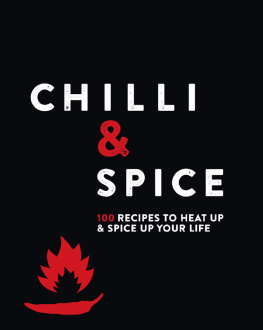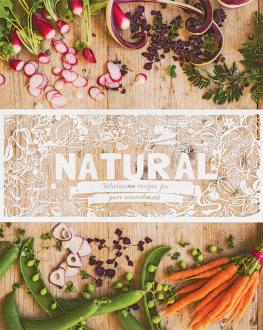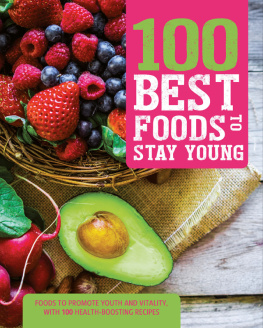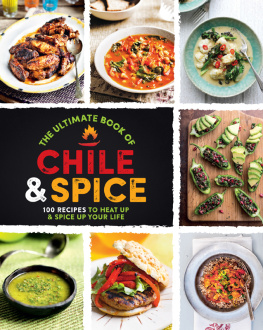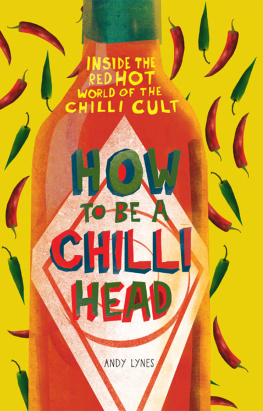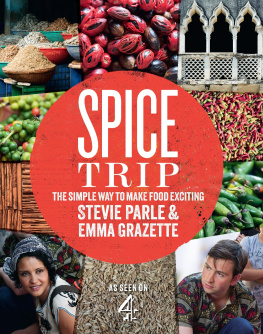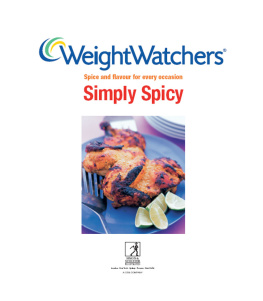Love Food Editors - Chilli & Spice
Here you can read online Love Food Editors - Chilli & Spice full text of the book (entire story) in english for free. Download pdf and epub, get meaning, cover and reviews about this ebook. year: 2017, publisher: Parragon Books Ltd, genre: Home and family. Description of the work, (preface) as well as reviews are available. Best literature library LitArk.com created for fans of good reading and offers a wide selection of genres:
Romance novel
Science fiction
Adventure
Detective
Science
History
Home and family
Prose
Art
Politics
Computer
Non-fiction
Religion
Business
Children
Humor
Choose a favorite category and find really read worthwhile books. Enjoy immersion in the world of imagination, feel the emotions of the characters or learn something new for yourself, make an fascinating discovery.
- Book:Chilli & Spice
- Author:
- Publisher:Parragon Books Ltd
- Genre:
- Year:2017
- Rating:5 / 5
- Favourites:Add to favourites
- Your mark:
- 100
- 1
- 2
- 3
- 4
- 5
Chilli & Spice: summary, description and annotation
We offer to read an annotation, description, summary or preface (depends on what the author of the book "Chilli & Spice" wrote himself). If you haven't found the necessary information about the book — write in the comments, we will try to find it.
Chilli & Spice — read online for free the complete book (whole text) full work
Below is the text of the book, divided by pages. System saving the place of the last page read, allows you to conveniently read the book "Chilli & Spice" online for free, without having to search again every time where you left off. Put a bookmark, and you can go to the page where you finished reading at any time.
Font size:
Interval:
Bookmark:


This digital edition published by Parragon Books Ltd in 2017
LOVE FOOD is an imprint of Parragon Books Ltd
Parragon Books Ltd
Chartist House
1517 Trim Street
Bath BA1 1HA, UK
www.parragon.com/lovefood
Copyright Parragon Books Ltd 2017
LOVE FOOD and the accompanying heart device is a registered trademark of Parragon Books Ltd in Australia, the UK, USA, India and the EU.
All rights reserved. No part of this publication may be reproduced, stored in a retrieval system or transmitted, in any form or by any means, electronic, mechanical, photocopying, recording or otherwise, without the prior permission of the copyright holder.
10 9 8 7 6 5 4 3 2 1
ISBN 978-1-4748-3558-9
Notes for the Reader
This book uses both metric and imperial measurements. Follow the same units of measurement throughout; do not mix metric and imperial. All spoon measurements are level: teaspoons are assumed to be 5 ml, and tablespoons are assumed to be 15 ml. Unless otherwise stated, milk is assumed to be full fat, eggs and individual fruits and vegetables are medium, pepper is freshly ground black pepper and salt is table salt. A pinch of salt is calculated as 1/16 of a teaspoon. Unless otherwise stated, all root vegetables should be peeled prior to using.
The times given are an approximate guide only. Preparation times differ according to the techniques used by different people and the cooking times may also vary from those given.
For best results, use a food thermometer when cooking meat.
Check the latest government guidelines for current advice.
Take care when preparing chillies. The fiery heat comes from the chemical compound capsaicin, located in the white pithy inner core or rib of the chilli. Capsaicin can aggravate skin and eyes so always wash your hands thoroughly after handling chillies. If your skin is sensitive, wear plastic gloves. Never touch your eyes or mouth after handling chillies without thoroughly washing your hands first with soap and water.

If youre tired of preparing the same predictable meals and are craving something with a little more oomph, then look no further. Chilli & Spice features 101 sizzling recipes from around the globe to help jazz up your dishes warming starters, snacks and sides; fiery vegetarian, meat, and fish mains; and tantalizing sweet treats.
SPICES
In ancient times, spices were used to prevent ingredients from going off and to disguise food with strong odours and unpleasant flavours. As they became popular for their aromatic flavours, spices were integrated into everyday cuisine, with countries and regions developing their own unique signature dishes based on available indigenous spices. Over time, people discovered the remarkable medicinal properties of specific spices.

Nowadays, we may not give much thought to our ubiquitous, affordable spices as we sprinkle them liberally over ingredients, but they have an incredible history. Once the worlds biggest and most dominant industry, the spice trade produced great wealth for many nations. Spices were such precious commodities that nutmeg and pepper were worth more than gold.
The spice trade began with camel caravans in the Middle East some 4,000 years ago. Arabic spice traders spun elaborate myths about how hard the spices were to come by, thereby adding to their allure and driving up prices. The Silk Road connecting Asia with North Africa and Europe played a vital role in building mighty civilizations and empires such as those of China, India, Egypt, Persia, Arabia and Rome.

For centuries, Middle-Eastern and North African traders monopolized the spice trade, becoming increasingly wealthy and powerful, and forcing European merchants to pay excessively high prices. By the 1400s, even the nobility was struggling to pay for aromatic luxuries, so explorers were dispatched overseas in search of alternative trade routes.
First to cross the Atlantic Ocean was Italian explorer Christopher Columbus, who accidentally stumbled across the Americas in 1492 while looking for precious black pepper and a more direct route to India. He discovered new fruit and vegetables, including maize, potatoes, pumpkins, pineapple, avocados and papayas, and perhaps most notably the much-loved chilli pepper.
In 1497, Portuguese explorer Vasco de Gama became the first to sail directly from Africa to India. His sea route around Africa opened up trade between Europe and Asia and led to a Portuguese dominance of the spice trade that endured for centuries.
As spice cultivation began to spread around the world, availability became more widespread, and prices fell. Highly valuable spices, such as pepper, cinnamon and nutmeg, are no longer the precious products they once were, but they are just as popular today, still cherished for their vibrant colours, pungent flavours and enticing aromas.

CHILLIES
Chilli peppers are the fruit pods of perennial, woody-stemmed shrubs that belong to the Capsicum genus They originate from Central America where archeologists have found traces of their consumption by humans dating back to 7500 BCE . Chillies have been used as a primary ingredient in Mexican cooking for hundreds of years.
Although chilli peppers were unheard of in Europe until Columbuss 15th-century discovery, they had already played a major part in Asian cuisine for some 2,000 years. With the increase in shipping during the 16th and 17th centuries, Indian and Chinese flavourings spread around the globe. Chillies soon became a favourite way to add piquancy to cooking, especially as they were much cheaper than pepper.
Chillies have never fallen out of favour, and today around 25 per cent of the worlds population enjoy them in their daily diet. There is a huge variety to choose from, including birds eye, Scotch bonnet, habaero and jalapeo. They are grown widely in many parts of the world as an important commercial crop, but India is the biggest cultivator, exporter and consumer of this hot pod.
As well as their fiery flavours, chillies also have many nutritional and health-boosting benefits. The pods heat-emitting chemical compound, capsaicin, has anti-bacterial, anti-carcinogenic, and pain-relieving properties, and may also lower bad cholesterol. Fresh red and green chillies are a rich source of vitamins A, B and C, as well as minerals such as iron, potassium, magnesium and copper.
Chillies can be bought fresh, dried or powdered. Fresh varieties come in vibrant colours of red, green, orange and yellow, and you should look for firm, plump ones with healthy stalks. Avoid buying chillies that are soft, discoloured, missing their caps or have spots or signs of mould. Store them in the fridge or a cool, dark place for up to two weeks, then wash before use. The most flavoursome dried chilli peppers are the sun-dried variety. Look for ones with smooth, unblemished skins with a slight bendiness to them. Use within a year.
Font size:
Interval:
Bookmark:
Similar books «Chilli & Spice»
Look at similar books to Chilli & Spice. We have selected literature similar in name and meaning in the hope of providing readers with more options to find new, interesting, not yet read works.
Discussion, reviews of the book Chilli & Spice and just readers' own opinions. Leave your comments, write what you think about the work, its meaning or the main characters. Specify what exactly you liked and what you didn't like, and why you think so.

